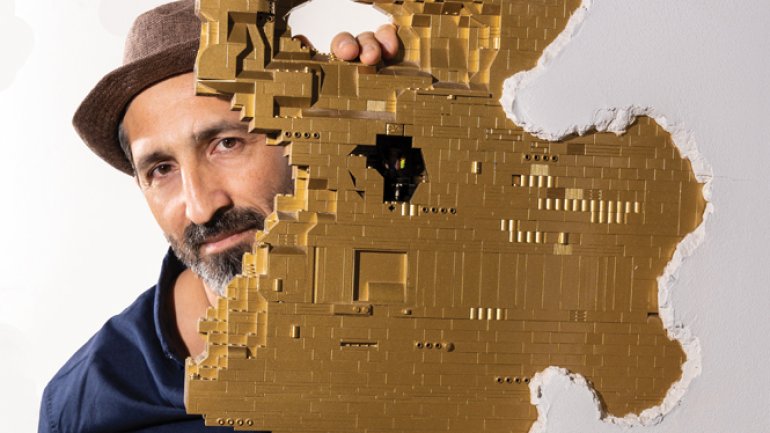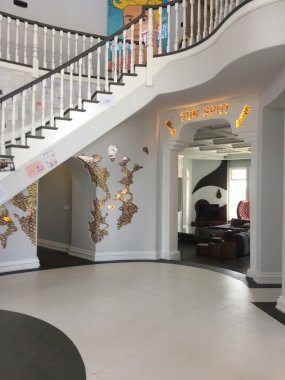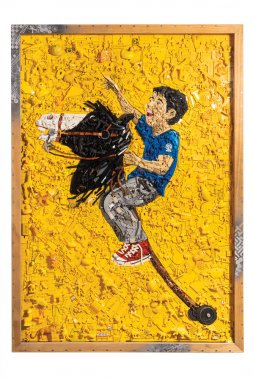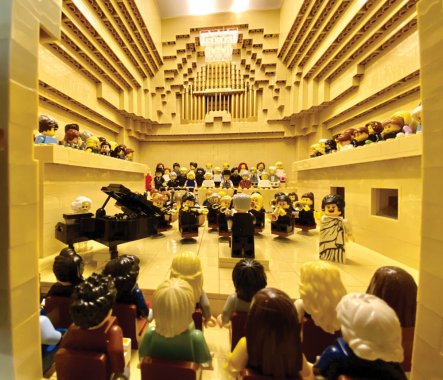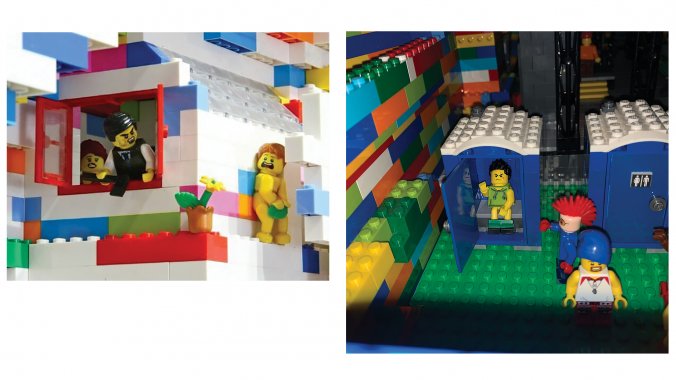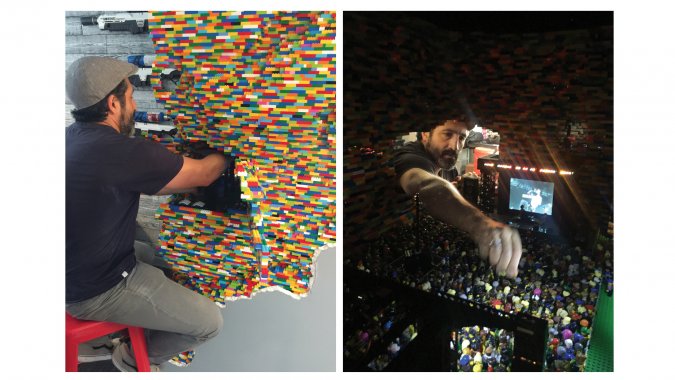Brick Layer
Brick Layer
It’s no coincidence that Dante Dentoni, a Miami contractor turned installation artist, was sitting in a Lego Store parking lot while retracing the path that brought him to his distinctive medium. “I wanted to create art that had a stronger relationship to the construction work I used to do,” he explains.
His career as a Lego craftsman began in 2008, when a successful artist living in Florida hired him to help fabricate a project. The collaboration went so well that the artist brought him on permanently and, in time, began nurturing Dentoni’s own artistic ambitions. His work initially took the form of colorful pieces made of paint swatches and paper, but Dentoni felt something was missing. He wanted a more tangible connection to his former profession. “I found that in Legos,” he says, “in going from the bricks of an adult to the bricks of a child.”
By the time he participated in his first group show in 2011, Dentoni had settled on what has become his unmistakable aesthetic: Lego installations, typically with hidden rooms containing figurines arranged in various scenes. He integrates them into the interior walls of a space, to create the illusion that they’re part of the structure. Over the years, the 45-year-old Argentina native has been asked to create pieces for the homes of high-profile fans such as DJ, record producer, and electronic musician Zedd; Miami-based nightclub owner Dave Grutman; and YouTube star Jake Paul. The waiting list for Dentoni’s installations, which cost tens of thousands of dollars, is months-long; visits to Lego Stores, where he buys as many loose bricks “as I can carry,” have become routine.
Each project begins with a visit to a client’s home. To determine where he can place an installation, and how big he can make it, Dentoni takes apart the chosen section of wall to see what obstacles exist, then patches everything back up. (If an onsite visit can’t be arranged, he’ll ask for a set of blueprints or send in a local contractor.) Then Dentoni asks his clients which elements they want included. “We talk about colors,” he says, “as well as memories, favorite movies, hobbies – whatever they want.”
He encourages his clients to indulge in their passions. Take Zedd’s: The musician/ DJ wanted a room inspired by OMNIA (the Las Vegas club where he has a residency), a room modeled after a map from his favorite video game, a room inspired by the movie Alien and UFOs, and a “Dreamworld” for which he worked with Dentoni on mood boards to convey his vision. That degree of specificity presents a challenge that Dentoni relishes. The only requests he turns down are those that are unsafe or physically impossible.
Following the consultation, Dentoni retreats to his shop. Although he provides clients with a rendering of how the installation will appear in their wall, including where he’ll place the doors that open to reveal the hidden rooms, he improvises the rest. “When I create the scenes, I must feel the freedom to go in any direction I wish,” he explains.
Dentoni prizes humor. One scene, for example, includes a naked man cowering on a ledge outside his lover’s window to avoid her ax-wielding husband. To create a convincing nude (Lego hasn’t yet released pants-less minifigures), Dentoni crafted custom legs from bare Lego arms. Last year he made similar modifications for an installation commissioned by Miami’s Rolling Loud Festival that depicts a large concert scene. On the fringe of the crowd is a portable toilet with an open door revealing a guest, pants bunched at the ankles, who is none too pleased to be intruded upon. (Not all of his figurine modifications involve de-pantsing: Dentoni once elongated the arms of two characters to allow for a more convincing hug between them.) The Rolling Loud piece was also notable as the first time Dentoni incorporated working video screens. A dream project, he says, is to depict the screen-packed Times Square.
Dentoni builds the scenes within a larger structure made of wood and/or PVC, then glues everything together once he becomes satisfied with the arrangement. The structures are then overlaid with a frame made of the same material as the surface into which they’ll be installed, typically drywall. The inner edges of the frame are fashioned in a jagged, irregular pattern to create the appearance that parts of the drywall have fallen away, revealing a Lego wall behind it: the central conceit, and joke, in Dentoni’s work. Then the completed unit is shipped to the client, and Dentoni arrives to reopen their wall and install it. (If a client doesn’t have the space for an in-wall piece, Dentoni can create self-standing pillars to contain them. He is also experimenting with framed wall hangings and once produced a kitchen counter with a glass surface, an elaborate water scene contained within.)
Occasionally the process requires reconfiguring studs, which Dentoni’s construction background qualifies him to do, but he never touches load-bearing elements or places weight on the Lego structures. Afterward, the surrounding wall is patched so that the installation seamlessly blends into its surroundings. Then, Dentoni is on to his next project, and, inevitably, back to the Lego Store.


